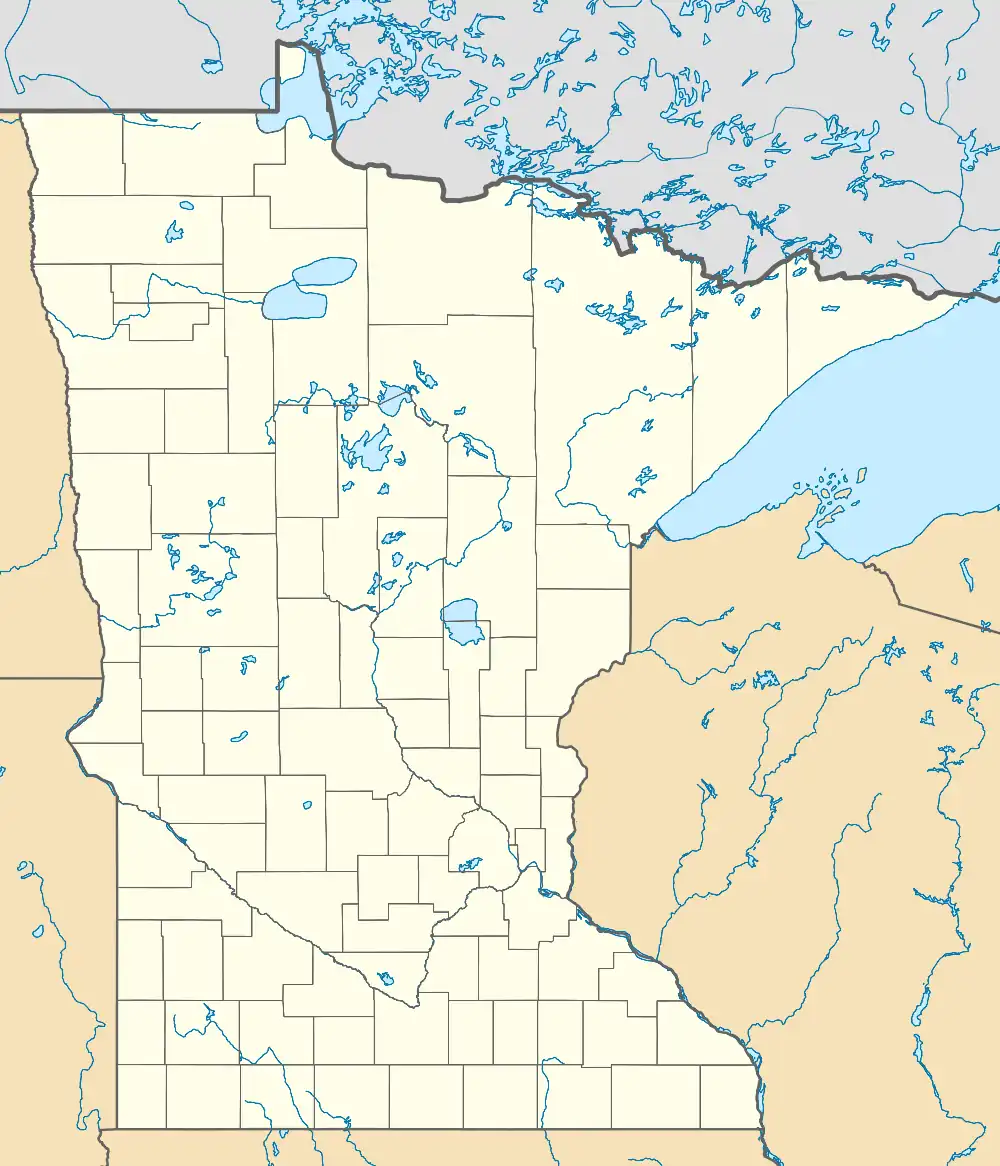Moose Lake | ||||||||||||||||
|---|---|---|---|---|---|---|---|---|---|---|---|---|---|---|---|---|
| Former Soo Line passenger rail station | ||||||||||||||||
 Moose Lake station in September 2007. | ||||||||||||||||
| General information | ||||||||||||||||
| Location | 840 Folz Boulevard, Moose Lake, Minnesota 55767 | |||||||||||||||
| History | ||||||||||||||||
| Opened | 1873 | |||||||||||||||
| Closed | May 16, 1959 | |||||||||||||||
| Rebuilt | 1907 | |||||||||||||||
| Services | ||||||||||||||||
| ||||||||||||||||
Minneapolis, St. Paul, and Sault Ste. Marie Depot | ||||||||||||||||
  | ||||||||||||||||
| Location | 840 Folz Blvd., Moose Lake, Minnesota | |||||||||||||||
| Coordinates | 46°27′14″N 92°46′7″W / 46.45389°N 92.76861°W | |||||||||||||||
| Area | less than one acre | |||||||||||||||
| Built | 1907 | |||||||||||||||
| Architect | Soo Line Railroad | |||||||||||||||
| NRHP reference No. | 86003813[1] | |||||||||||||||
| Added to NRHP | March 17, 1994 | |||||||||||||||
Moose Lake station in Moose Lake, Minnesota, United States, is a depot built in 1907 by the Soo Line Railroad. The building was one of the few buildings that survived the 1918 Cloquet Fire, and it was used to provide shelter for those left homeless in the fires.[2] It was listed on the National Register of Historic Places in 1994 as the Minneapolis, St. Paul, and Sault Ste. Marie Depot.
The railroad first built a depot in this location in 1873. The 1918 Cloquet Fire started on October 12, 1918, with a background of a hot, dry summer, followed by a fall with little rain. The fire started on a windy day when a spark, possibly thrown from a passing train, ignited nearby brush. Much of the area, from Sturgeon Lake to Moose Lake, Cloquet, and close to Duluth, was devastated by the fire. It killed 453 people, and 52,000 homes were destroyed. The American Red Cross housed the homeless in "fire shacks". The residents of Moose Lake decided to rebuild the community.
Passenger train service to the Moose Lake station ended on May 16, 1959, when trains 64 and 65 were discontinued between Duluth and Thief River Falls. However, mixed train service between Glenwood and Superior through Moose Lake continued until at least 1962. [3][4]
The depot now serves as the Depot and Fires of 1918 Museum that tells the stories of the tragedy and the heroism brought out by the fire. The museum is operated by the Moose Lake Area Historical Society.
The Soo Line tracks are now gone, replaced by a recreational trail, the Soo Line Trail.[5]
References
- ↑ "National Register Information System". National Register of Historic Places. National Park Service. March 13, 2009.
- ↑ Nord, Mary Ann (2003). The National Register of Historic Places in Minnesota. Minnesota Historical Society. ISBN 0-87351-448-3.
- ↑ "Income Ahead of 1958, Says Soo Line Chief". Minneapolis Star. May 19, 1959. Retrieved October 13, 2022.
- ↑ "Hearing Set on Dropping Trains". Minneapolis Star. January 23, 1962. Retrieved October 13, 2022.
- ↑ Wurzer, Cathy (2008). Tales of the Road: Highway 61. Minnesota Historical Society. ISBN 978-0-87351-626-6.